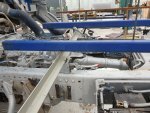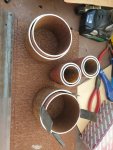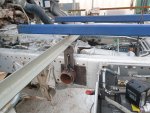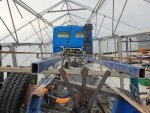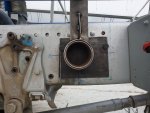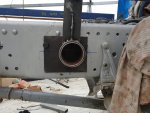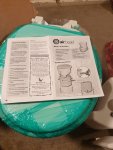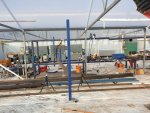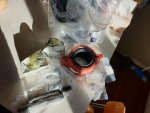Madoxen
Active member
Well after a heap more lifts and some extra steel 75x50x6mm for the longnitudal frames ( to stop the east west flex while it is leant over) we have ended up finding the nutral point of the chassis . We picked up the rear right wheel to 700mm and pulled out the center pivot pin once tipped and then replaced it then the rear pivot pin and then replaced it once we had concluded that pulling the pins made no change to the hole alignment
The observant of u will notice the 100mm pipe in the frame this was just to stop the weight of the frame from pulling the rear end down when pivot was removed but it did freely roll left and right so if there was pressure there it wohld just roll.( i could roll it either way with my little fingure .
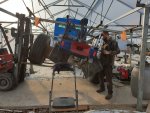
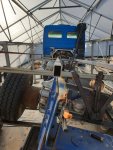
The observant of u will notice the 100mm pipe in the frame this was just to stop the weight of the frame from pulling the rear end down when pivot was removed but it did freely roll left and right so if there was pressure there it wohld just roll.( i could roll it either way with my little fingure .


Last edited:

